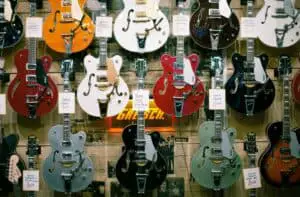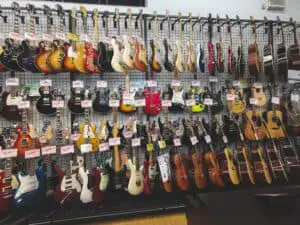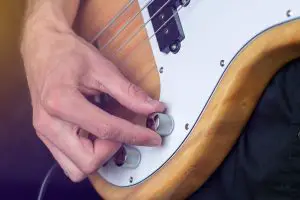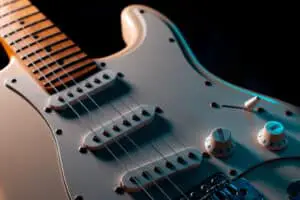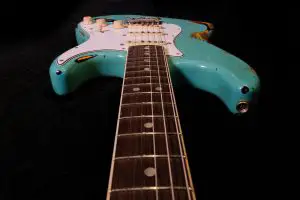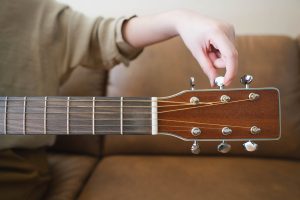
As a guitarist, you’ll want to do everything possible to produce the best sounds. You spend time learning chords, notes, and melodies to improve yourself. However, you might notice the irregularities in your tones, and sometimes, it doesn’t necessarily mean you’re a bad player; it might just be the instrument.
A guitar neck is probably its most important part, and any dent on it will surely affect your sound. The guitar’s neck is made from wood, making it vulnerable to temperature and humidity defects.
A warped guitar neck is the product of an upset with the balance of the water and air content in the wood of the guitar’s neck. Forcing it to either swell or shrink in some parts. Seeing as a warped guitar can significantly affect the quality of sound your guitar produces, it’s good to know when your guitar neck is warped.
So how can you tell if your guitar’s neck is warped?
You can check if your guitar’s neck is warped by looking down to see if both sides of the neck are evenly curved. Your guitar’s neck is warped if one side is higher than the other. You can also make use of a feeler gauge to confirm the string heights at different parts of the neck.
A warped guitar neck is pretty common in the guitar community. We’ll be giving you a complete guide on how to check your guitar’s neck to see if it’s warped. We’ll also share tips on how to prevent your guitar’s neck from warping. Explore!
How to Tell if Your Guitar’s Neck Is Warped
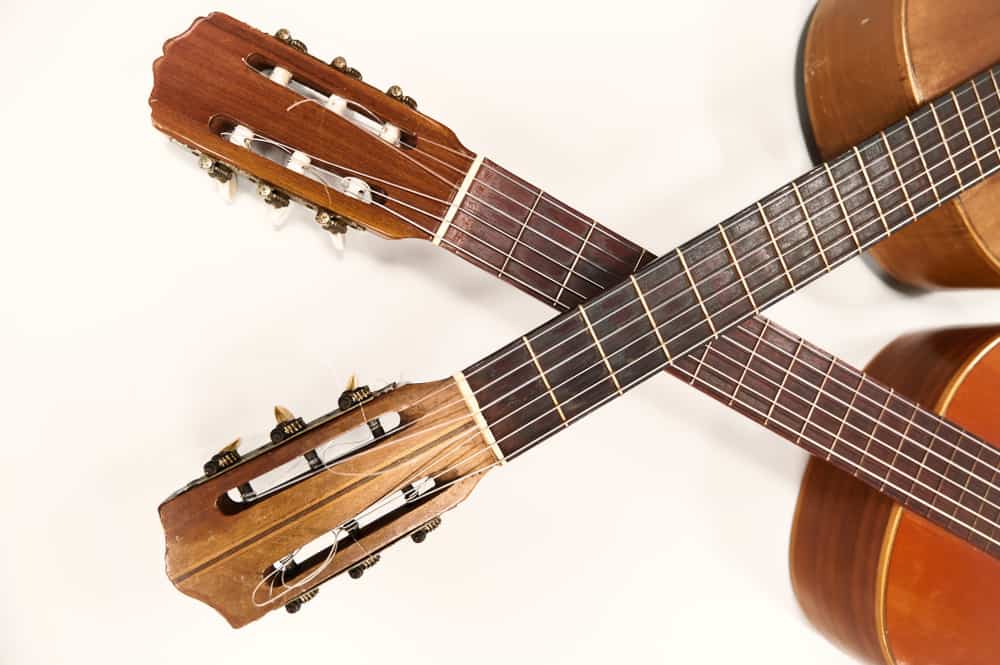
Most times, you might not even notice the change in the guitar’s appearance. But if you’ve been playing that particular instrument for a while, there’s a chance that you’ll hear the change in tone and melody. Here are two ways to confirm if your guitar’s neck is truly warped.
The Eye Test
If you lay your guitar flat down and look at it, you might think it’s as flat as the day you bought it. To notice the warped neck using the eye test method, stand the guitar and ensure it’s straight.
Proceed to look down at the guitar from the headstock. If possible, do this outside in the daytime or in a place with proper lighting. Because most times, the differences might be hard to notice.
If the guitar’s neck is warped, you’ll notice that one side is lower than the other. It’ll basically look like a twisting or winding staircase.
If you conduct the eye test under good lighting, you should be able to notice a warped neck because it’s by far the most used method and has proven to be efficient.
Feeler Gauges
A feeler gauge is an important tool every guitarist should own. Besides using it to check if your guitar’s neck is warped, you can also check the guitar’s string height.
Feeler gauges are thin metallic pieces that are slotted into narrow gaps or holes to measure them. These measurements are mostly in thousandths of an inch or hundredths of a millimeter.
Every feeler gauge has its measurement, and you’ll need to know the relief at each part of the neck before choosing a gauge to use. This is important because using a gauge bigger than the neck relief can damage your guitar or gauge.
Now, insert the gauge underneath the string on top of each fret across several parts of your guitar’s neck. That will check the difference in height between the string and the fret. You can do this simultaneously with a six-inch Stewmac ruler to confirm your readings.
Surely there’ll be tiny gaps between different points on the neck, but if you notice that the gaps are too wide, then the guitar’s neck is probably warped.
The relief on acoustic and electric guitars is usually between 8-10 thousandths of an inch.
How To Prevent Neck Warping
Preventing a guitar’s neck from warping is all about good maintenance. Here are some tips to help you.
- Do not store the guitar in environments with high humidity, like your garage or basement.
- Avoid leaving your guitar outside on sunny days. Unless you’re playing outside, you should keep your guitar away from sunlight. Also, avoid keeping it close to any device that emits heat.
- Stop keeping your guitar in your car’s trunk. A car’s trunk is either too humid or too hot, which might cause irreversible damage to your guitar’s neck.
The Bottom Line
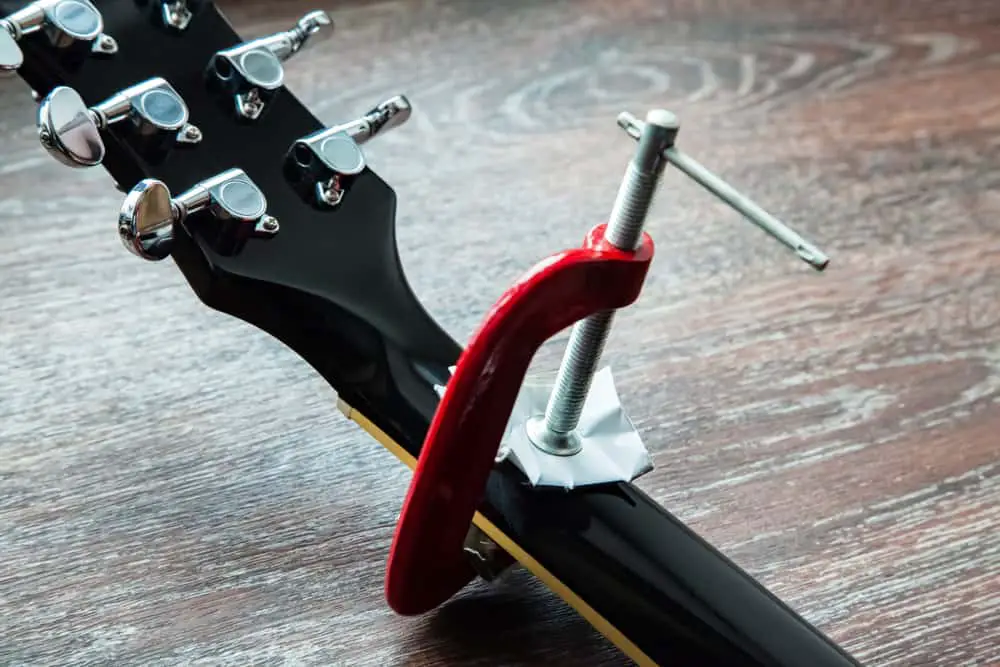
If you notice changes in your guitar’s tone that persist even after tuning, there’s a high chance the guitar’s neck is warped. Luckily, there are ways to tell if a guitar’s neck is warped.
You could use the eye test where you check the neck level by looking from the top of the headstock. Or you could use a feeler gauge to check the gap differences between the string and fret at different parts of the guitar’s neck.
Whichever you choose, once you’ve confirmed your guitar’s neck is warped, please take it to your local store for it to be fixed.
Frequently Asked Questions
Yes, if your notice your guitar’s neck is warped, you can adjust it using the truss rod. This method only works for modern guitars with a truss rod adjustment system. If your guitar doesn’t have an adjustment system, take it to a professional for repairs.
Prices may vary based on the extent of the damage, but it’s usually in the $100 – $500 range.



